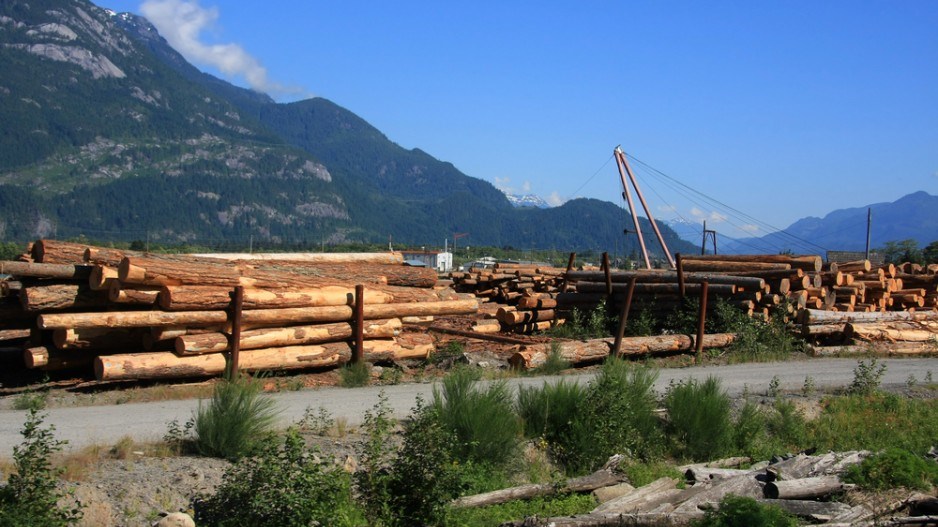After seven years of managing its way through the worst economic downturn in memory and going through several false starts to recovery, British Columbia's forest industry is on track for slow but steady growth in 2014.
The long-promised super-cycle, when both North American and Asian markets are booming, has been pushed back to 2015 or even 2016, say most analysts. And despite the ravages of the mountain pine beetle, which is leading to sawmill closures, B.C. lumber production is actually increasing.
Further, the longest-running environmental fight in the province – the Great Bear Rainforest dispute that pitted loggers against preservationists – is expected to be resolved early in the year. The final decision is expected to take into account both the economy and ecosystems.
Rick Jeffery, chief executive officer of the Coast Forest Products Association, predicted that 2014 would be boring, but that's not necessarily a bad thing. Stability is finally here, he said.
"All in all, it's shaping up to be more of what we saw in 2013 proceeding into 2014," Jeffery said. "I'm not complaining. It's just boring."
At Terminal Forest Products' Mainland Sawmill in Vancouver, the log pond was full and the mill humming with activity in mid-December.
"We are looking forward to moderate increases in 2014," said Eric Calverley, Terminal's vice-president of manufacturing.
Keta Kosman, publisher of Madison's Lumber Reporter, said she sees regular seasonal price cycles finally returning to the market, a benefit for loggers, who can manage their businesses more efficiently, as well as for producers.
And with the mountain pine beetle's impact on the timber supply becoming clearer, she expects more deals between producers within B.C. to rationalize mills and concentrate their remaining timber supplies around their most efficient operations.
In November, Canfor Corp. (TSX:CFP) and West Fraser (TSX:WFT) swapped timber licences and announced one sawmill closure each in order to keep a smaller number of mills adequately supplied with logs.
"My suspicion is something similar will happen in the southern Interior," Kosman said.
The beetle has affected the timber supply, but the rapid growth of the Chinese market, which has developed a voracious appetite for the lower grades of lumber coming out of beetle-killed forests, has kept production levels high. B.C. lumber shipments to China hit an all-time high of $1.17 billion to the end of October, surpassing the previous high of $1.1 billion for the entire year in 2011.
For 2014, RBC Capital Markets analyst Paul Quinn is forecasting modest growth with less volatility. He expects companies will continue to plow some of their lumber earnings back into capital expenditures within B.C. Acquisitions, however, are likely to be outside B.C., with major players seeking to increase their production in the low-cost U.S. South.
Quinn forecasts a modest 4% increase in North American lumber prices for 2014, compared with 18% in 2012 and 17% in 2013. U.S. housing starts, he said, will likely hit 1.05 million, a long way from the 1.5 million to 1.6 million needed for the super-cycle theory to have an impact.
He added that producers prefer less volatility, citing the chaos that followed a quick run-up at the beginning of 2013, when lumber passed the benchmark price of US$400 per thousand board feet.
"The problem is, then you lose a number of buyers. The Chinese simply walked away at that point."
Despite the slow-but-steady growth projections, Quinn said B.C. mills have a big factor in their favour: a weaker Canadian dollar. The dollar has slipped from par with the U.S. greenback to $0.94 this year, and RBC's internal estimates show it slipping even further in 2014, ending the year at $0.91.
Jeffery sees China – a major market for coastal producers – following a similar track to that of the U.S. with slow but steady growth rates. Pulp prices are expected to stay relatively stable.
But Jeffery said the steady recovery doesn't mean the industry no longer faces issues. Inflationary pressures are building throughout the sector.
"We are back doing business except the inflationary pressures are there in front of us. We have to make sure we manage our way through it and maintain our competitiveness."
Labour rates, contractor rates, the return of the provincial sales tax and increased hydro rates all take their toll, he said.
Hydro rate increases alone could have a huge impact on the coastal industry, where one company, Catalyst Paper Corp. (TSX:CYT), is facing a $25 million increase in power costs.
"That's weighing on the entire coastal industry," Jeffery said.




